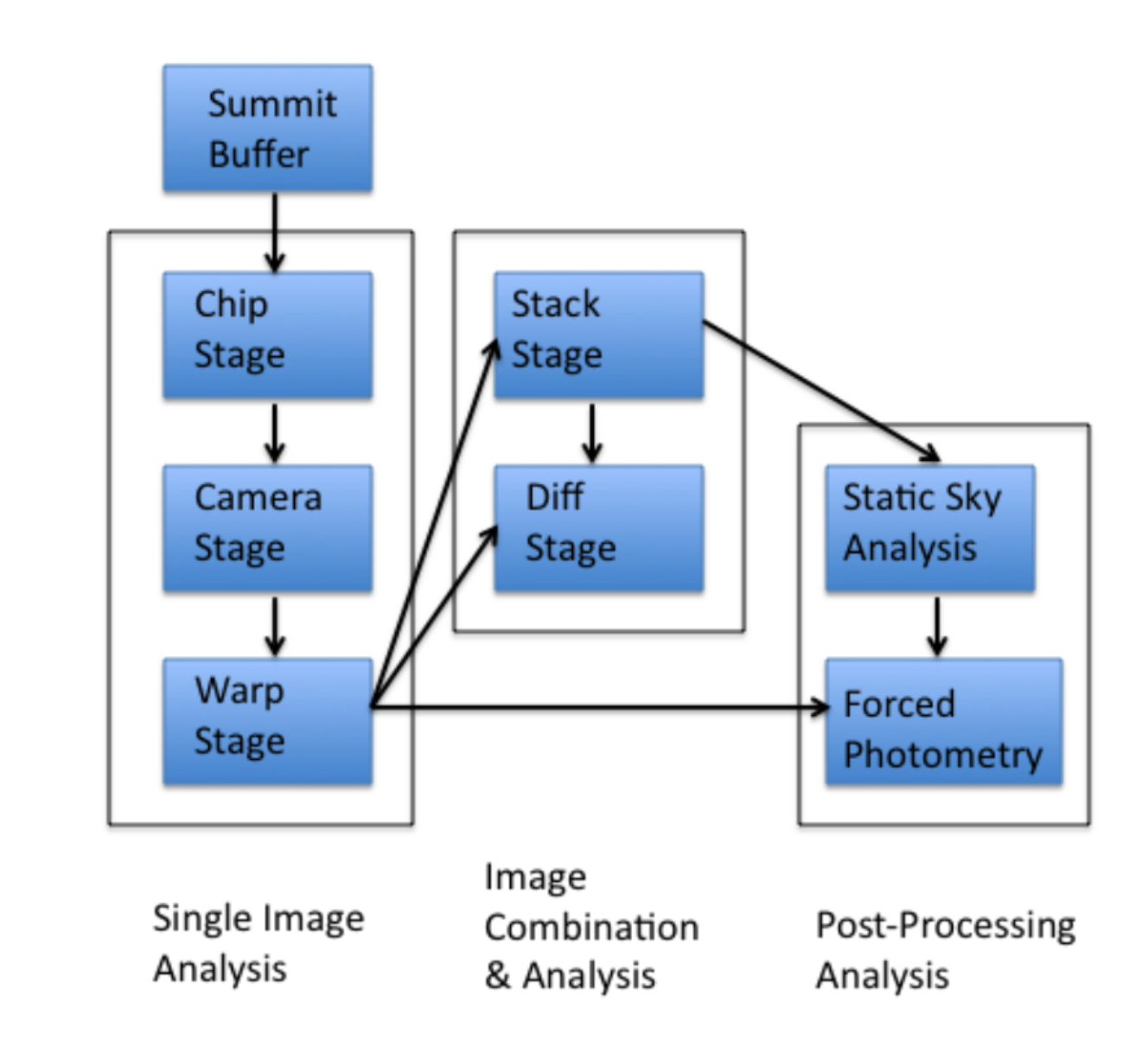Page History
Versions Compared
Key
- This line was added.
- This line was removed.
- Formatting was changed.
| Excerpt |
|---|
PS1 took approximately 370,000 exposures |
from 2010 to 2015, each exposure consisting of 60 CCD images. These |
exposures are detrended, astrometrically calibrated, resampled (warped) onto a standard sky coordinate grid, stacked, and differenced. The different types of images are described below. More details about image filenames and data formats are included in the description of the PS1 Image Cutout Service. |
The following information is taken from Waters et al. and Magnier et al., which should be cited appropriately.
| Tip | ||||||
|---|---|---|---|---|---|---|
| ||||||
|
Planned content:
| Excerpt |
|---|
|
 Image Added Image Added |
| Schematic of the images and analysis processing stage of the PS1 IPP Pipeline, described in Magnier et al. |
|---|
Raw images
Raw ImagesAfter an exposure is taken at the summittelescope, the raw image files of the 60 OTA CCDs (see PS1 GPC1 camera) are corrected for persistence issues and then handed over to the the PS1 IPP processing pipeline for further analysis. The STScI PS1 public archive Archive does not provide these images.
Camera
Imagesimages
The camera images are created by by applying PS1 Exposure detrending to the raw images (i.e.g., masking, bias subtraction, flat fielding), and applying an determining the astrometric and photometric calibration. The STScI PS1 public archive Archive does not provide these images.
Image
Artifacts and AnomaliesThe OTA CCDs have known artifacts and anomalies. A lot of work has gone into characterizing these artifacts, and removing them if possible. Pixels affected by these artifacts or anomalies are kept tracked of in the mask images with pixel flags.
Warps
Warps are the result of resampling and realigning the camera images onto regular areas (called skycells) on the sky (basically aligned N-S, E-W). How this is done depends on the particular tessellation. Different surveys may have different tessellations. A warp will generally consist of several different OTAs, therefore there are gaps between the OTAs, as well as the smaller gaps between the cells. Warps are astrometrically and photometrically calibrated. These images can be accessed and downloaded through the PS1 archive.
Stacks
Stacks are the 'optimal' combination of multiple warps on the same skycell. Consequently, the stacks are on the same sky tessellation than the warps. For the 3pi this may only be 10 or so warps, but for the Medium Deeps it can be several hundred. Stacks are also astrometrically and photometrically calibrated. These images can be accessed and downloaded through the PS1 archive. As well as the standard masks and weights, stacks come with two other auxiliary image files:
- 'num' images - these contain the number of warps with valid data which contributed to each pixel
- 'exp' images - these contain the exposure time in seconds which contributed to each pixel
artifacts and anomalies
| Excerpt Include | ||||||
|---|---|---|---|---|---|---|
|
Warp images (available in DR2)
| Excerpt Include | ||||||
|---|---|---|---|---|---|---|
|
Stack images (DR1)
| Excerpt Include | ||||||
|---|---|---|---|---|---|---|
|
Difference images (planned to be available in future)
Difference ImagesDifference images are created by subtracting a warp from another image, in general the stack, after matching the PSFs and normalization using a spatially varying kernel. All static objects like such as galaxies and constant stars are subtracted out, and only the excess flux from the different epochs is left. Even though the differences images are not stored on disk, they can be created, and it is planned to make them accessible through the STScI PS1 at interface in a later release.
Mask Image
| Excerpt Include | ||
|---|---|---|
|
All images, warps and stacks, have Pixel Flags set for each individual pixels. This information is saved in a mask image, which in general has the suffix mask.fits(.fz) and mk.fits(.fz) for warp and stack images, respectively.
Weight Images
Weight images are variance maps. For single epoch warps, these variance contains the readnoise, Poisson noise, IfA: FILL with other contributions. For stacks, the noise is propagated from the individual input warps. These weight images can be used for estimates of the uncertainties in the photometry. We note that the deprojection of the chip images into the warps correlates the pixels, introducing covariance. Therefore the derived uncertainties might underestimate the true noise.
|
Weight Image
| Excerpt Include | ||||||
|---|---|---|---|---|---|---|
|
